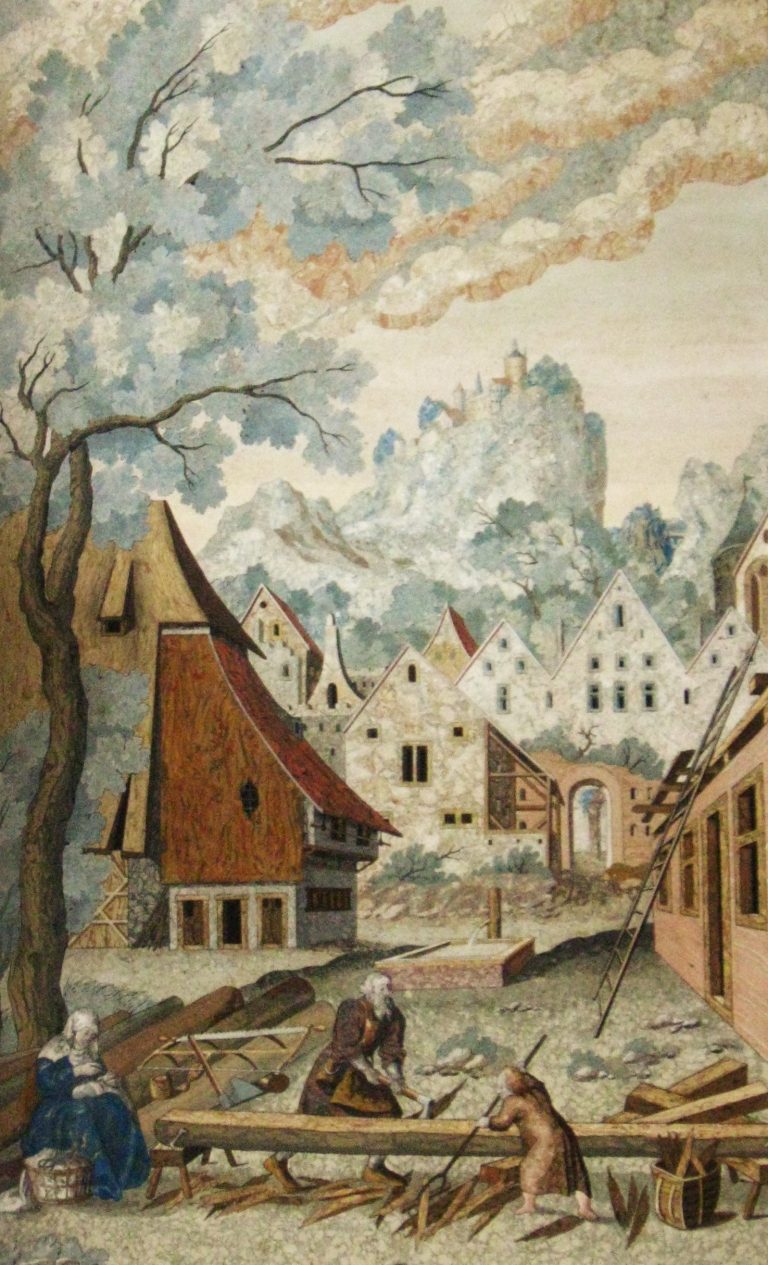Part 1. Scagliola at the Munich Court 1585-1700
Section IV. Scagliola Production in 17th Century Munich.
9) Bavaria and the Munich Residence 1550-1700 10) Blasius Fistulator 11) Secrecy and Working Conditions in Munich c. 1600 12) Wilhelm Fistulator 13) The Third Generation 14) The Remuneration of Scagliolists at the Munich Court.
Building on the remarkable achievements of Blasius Pfeiffer, the family (from now on referred to as Fistulator, the classicised version of their name) was able to dominate the production of scagliola in Southern Germany until the closing years of the seventeenth century. They were helped in this by their strong relationship with the Bavarian Elector Maximilian I (r. 1597-1652) and the strict monopoly he imposed on the production of their material; but as news of the invention spread and the royal workshop grew and prospered, it faced the impossible problem of keeping the technique a secret.

‘Joseph as a Carpenter’: One of ten scagliola pictures from Wilhelm Fistulator’s Lives of Mary cycle (c. 1630).
Reiche Kapelle, Munich Residence
© Bayerische Schlösserverwaltung, www.schloesser.bayern.de
Photo by Richard Feroze
Special acknowledgements: Once again I would like to thank all the people at the Bayerische Schlösserverwaltung who were so generous with their help and advice.

